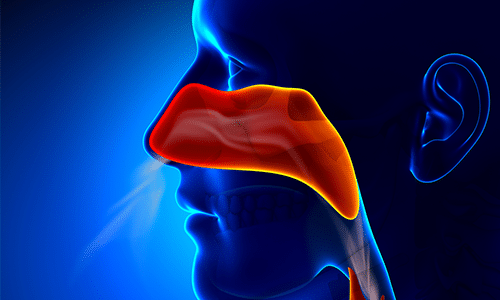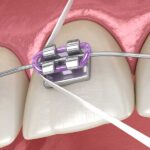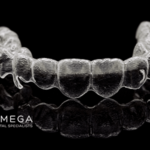Recent Posts
Can Root Canal Cause Sinus Infection?

As in all medical interventions, there is a slight risk of complication from root canals. The latest medical research suggests that in a small minority of cases, patients may experience maxillary sinusitis as a result. It’s important to stay informed throughout all stages of medical procedures so that you can identify any possible issues and talk to your dental practitioner about all of your concerns.
According to the most recent information from the American Association of Endodontics (AAE), root canals are a very common procedure. In fact, more than 15 million root canals are performed every year in the United States, which comes to more than 41,000 each day. Endodontists are trained to perform this procedure accurately and safely, with the result that nearly 90% of patients are satisfied following their root canal procedure.
Table of Contents
What is a Root Canal?
Let’s do a quick overview of your dental anatomy and what the root canal process entails. To start, it’s important to realize that your teeth aren’t just the part you see in the mirror. Each of your teeth is composed of several layers:
- Enamel. This is the hard outside substance of each tooth that protects the sensitive inner layers.
- Dentin. The next layer of your tooth, dentin is directly underneath the enamel and provides another hard layer of protection. It makes up the structural bulk of your tooth.
- Pulp. Inside the dentin lies the pulp of your teeth, which contains blood vessels, nerves, and connective tissue. The pulp extends all the way down into your gums, which is why it’s so difficult to reach if you get an infection in the pulp.
If the pulp of your tooth is compromised due to decay or trauma, then infections or inflammation can occur in the pulp. This often causes a lot of pain and can create an abscess in the gums. When this happens, your practitioner may recommend a root canal. Basically, this means that they will remove the infected pulp causing the problem, shape the root canal, and seal up the inside. Then, a dentist will place a crown on the tooth so you can return to using it in your everyday life.
What is Maxillary Sinusitis of Endodontic Origin?
So what can root canals have to do with sinus infections? It all comes down to your dental and facial anatomy: infections can easily spread from the molars in the back of your mouth to your maxillary sinuses, causing infection. This type of issue is referred to as a MSEO, which stands for Maxillary Sinusitis of Endodontic Origin.
It’s relatively common for infections to spread in this way. In fact, according to an article from the AAE, more than 40% of maxillary sinusitis cases are odontogenic, meaning that they originate in the tooth tissue. This percentage jumps up to 70% when the sinusitis is unilateral (occurring on one side of the face).
Maxillary Sinusitis from Root Canal
When determining if your sinus issues are caused by an existing root canal treatment, your practitioner will have to check how that bacteria is making its way from your root canal site to your maxillary sinuses. There are three main issues they’ll probably check for:
- Canals not filled or treated. If the canals were not properly filled during treatment, then bacteria can infiltrate the space.
- Core not restored. Part of the root canal treatment is shaping and restoring the core. If something goes awry in this process, bacteria can get into the root canal space and cause infection.
- Leaking coronal restorations. If the pulpal space isn’t sealed properly during the root canal, this can create a leakage situation in which microorganisms and bacteria can penetrate the space and cause infection.
Maxillary Sinusitis of Endodontic Origin without Root Canal
It’s important to understand that sinusitis can also be spread without a root canal. This could occur in any of your teeth that are showing signs of pulpal necrosis which means that the pulp tissue inside your death is dead. At this stage, you can easily suffer from recurring and painful infections that can travel to your maxillary region and lead to sinusitis.
If there’s a severe infection in the pulp of your tooth that’s causing the pulp to decay, it’s probably time to speak to your dentist or endodontist about receiving root canal treatment. Treatment for MSEO will include:
- Removing the infection-causing bacteria from your teeth.
- Removing the diseased and infected pulp.
- Prescribing antibiotics if necessary.
Many patients will have their symptoms of sinusitis cleared up after treatment of the infected pulp.
The Signs of Maxillary Sinusitis of Endodontic Origin
So, how do you figure out if your sinus issues are of endodontic origin? Surprisingly enough, many cases of MSEO won’t cause you any dental pain. This is because the infection is spreading from the tooth tissue into the sinuses, effectively reducing the pressure you might feel in a dental infection.
Instead, you’ll usually suffer from the general symptoms of a chronic sinus infection:
- Facial pain
- Congestion
- Runny nose
- Post nasal drip
- Foul odor
In fact, patients who have MSEO have often sought treatment from regular medical doctors who might not realize that there’s an endodontic link to the sinus infection. This can result in a long cycle of treatment and antibiotics that unfortunately aren’t getting to the root of the problem—infection-causing bacteria in the pulp tissue of your teeth.
If you have had endodontic surgery in the past, like a root canal, and you’re suffering from chronic sinusitis, then it may be time to contact your dental health practitioner about your concerns. And although MSEO often doesn’t present with any dental pain, it’s worth considering your history with dental issues. Have you had infections or abscesses in the past? Have you suffered from jaw or tooth pain previously? Is there any chance a previous surgery or infection may be causing lingering damage?
Getting Help From Your Practitioner
Remember that root canals have a very high success rate and can help you keep and maintain your natural smile. You don’t need to be fearful of receiving root canal treatment; just stay informed and educated throughout the process. It’s easy to make an appointment with a professional team to check up on your endodontic health, especially if you’re presenting with symptoms of MSEO from a previous surgery.
Once you’re armed with all of this information about your dental health, you can easily seek the help of a professional. When seeking root canal treatment for infection or inflammation, it’s important to choose the best, most qualified endodontic care. Seek care from experts who understand how to properly disinfect, remove infected pulp, and seal your teeth against further infections.
November 06, 2019Use Endodontic Microscope in Contemporary Endodontics
November 10, 2018Is It Possible to Fix a Cracked Tooth?
November 10, 2018Is There an Alternative to Root Canal Treatment?
October 31, 2018Can Root Canal Cause Sinus Infection?
August 13, 2018What Is The Apexification?




